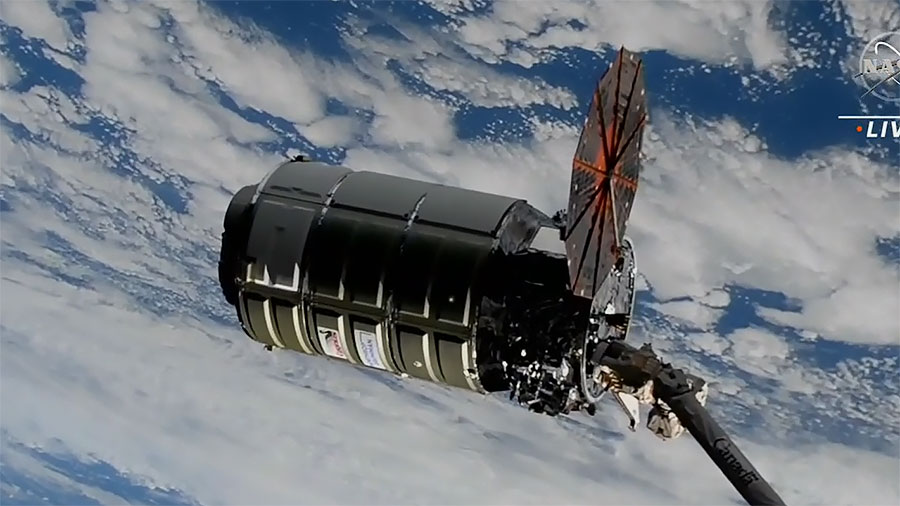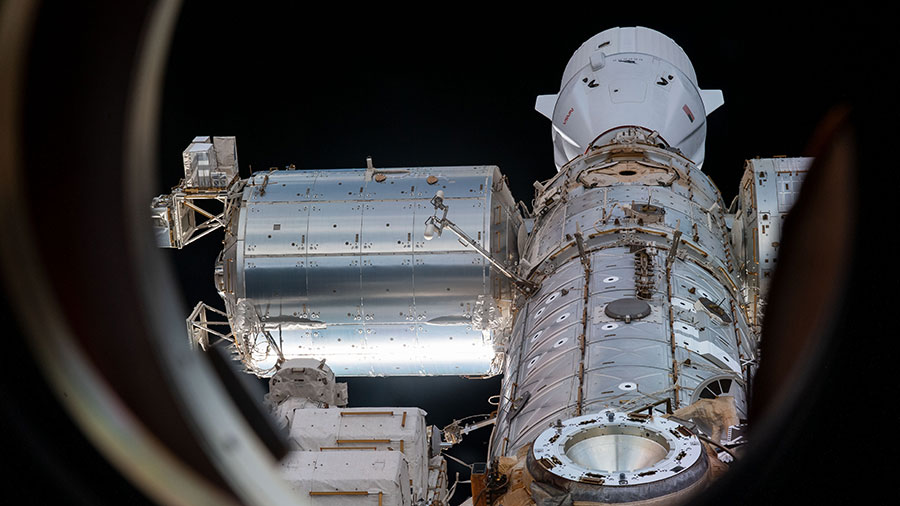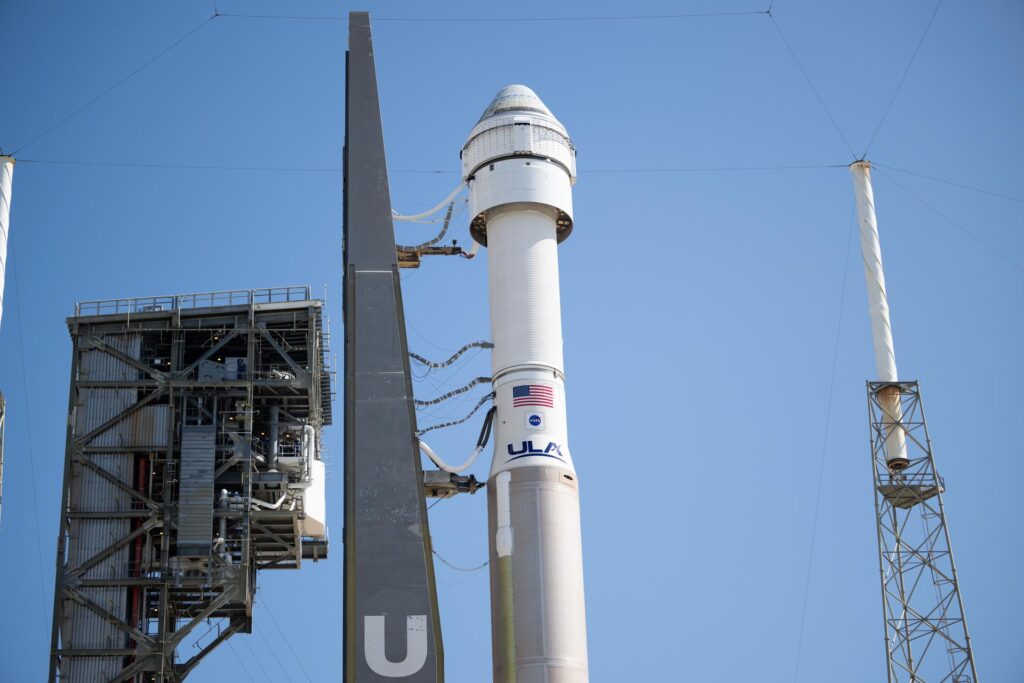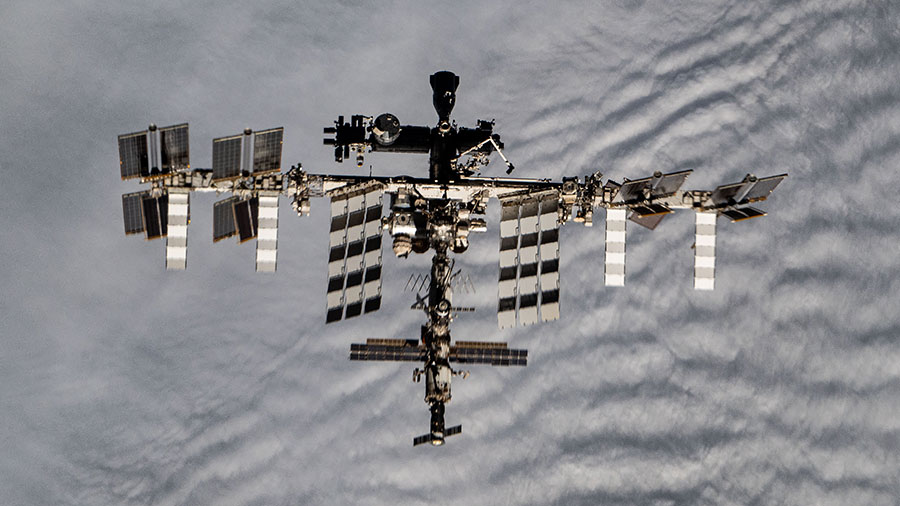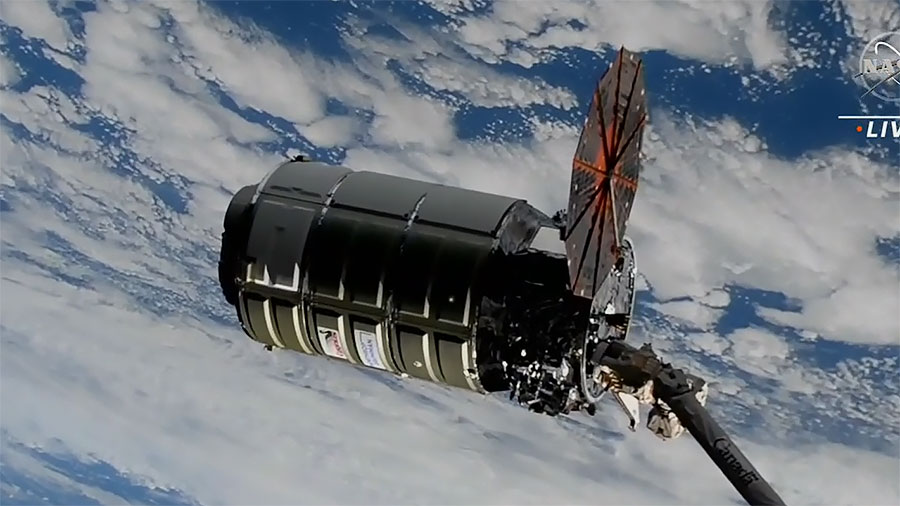
Fluid physics research and cargo craft departure activities kept the Expedition 69 astronauts busy aboard the International Space Station on Thursday. The cosmonauts were also back to work following an extended sleep period after they completed a spacewalk to move and install hardware on the orbital outpost.
All four astronauts worked throughout the day on a new technology study demonstrating the potential of using a liquid-based carbon dioxide removal system in space. UAE (United Arab Emirates) Flight Engineer Sultan Alneyadi kicked off the experiment Thursday morning setting up hardware and performing a test run to verify liquid flows. Next, NASA Flight Engineers Stephen Bowen and Woody Hoburg performed a variety of experiment runs observing different ways to control liquids in weightlessness. Finally, NASA Flight Engineer Frank Rubio took over the experiment and performed the last flow observation of the day before powering off the research hardware.
During the mid-afternoon after completing their fluid research activities, Alneyadi and Hoburg partnered together configuring the Northrop Grumman Cygnus space freighter for its departure. Bowen started the closeout work on Thursday morning depressurizing the vestibule between Cygnus and the station’s Unity module. Ground controllers will command the Canadarm2 robotic arm to detach Cygnus from Unity and release it at 7:20 a.m. EDT on Friday after five-and-a-half months at the station. Alneyadi will be on duty monitoring the U.S. cargo craft’s departure. Cygnus will then reenter Earth’s atmosphere above the Pacific Ocean for a fiery, but safe demise.
The next spacewalk is set for Tuesday, April 25, at 5:40 p.m. when Roscosmos Commander Sergey Prokopyev and Flight Engineer Dmitri Petelin will once again exit the Poisk airlock in their Orlan spacesuits. The duo will spend about six hours moving an experiment airlock from the Rassvet module then installing it on the Nauka science module. Flight Engineer Andrey Fedyaev will also be back on duty during the spacewalk operating the European robotic arm from inside the station and maneuvering the experiment airlock.
Learn more about station activities by following the space station blog, @space_station and @ISS_Research on Twitter, as well as the ISS Facebook and ISS Instagram accounts.
Get weekly video highlights at: https://roundupreads.jsc.nasa.gov/videupdate/
Get the latest from NASA delivered every week. Subscribe here: www.nasa.gov/subscribe

